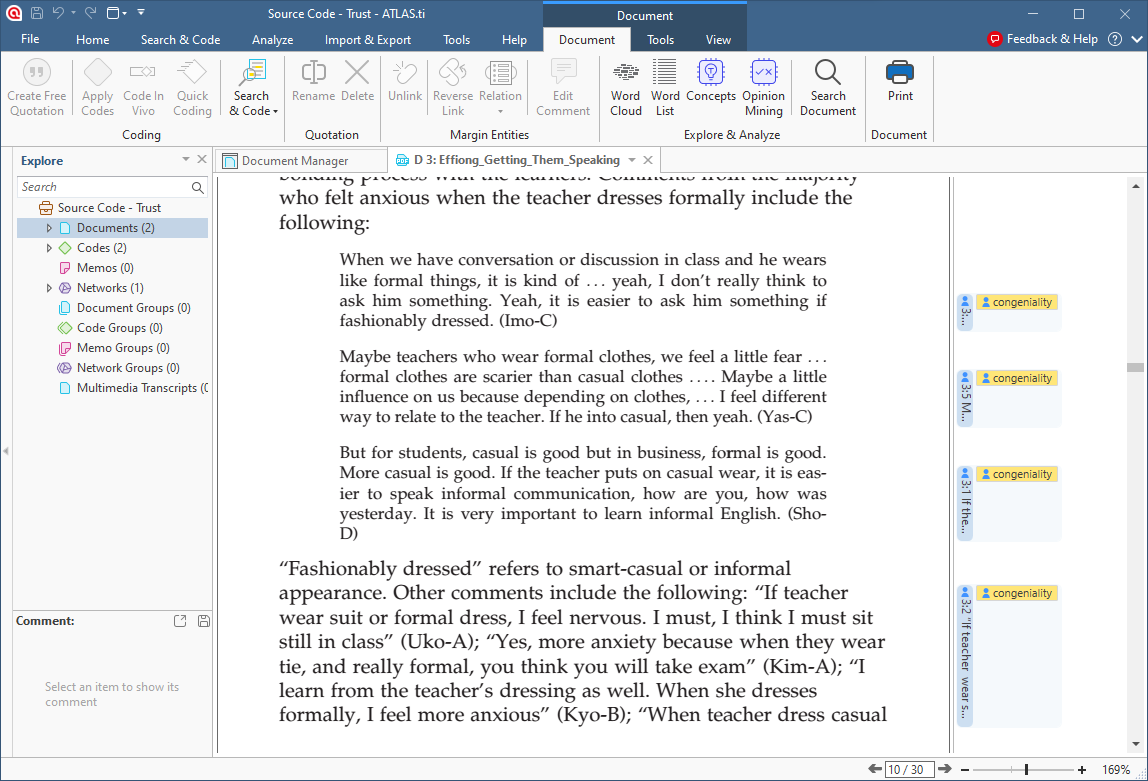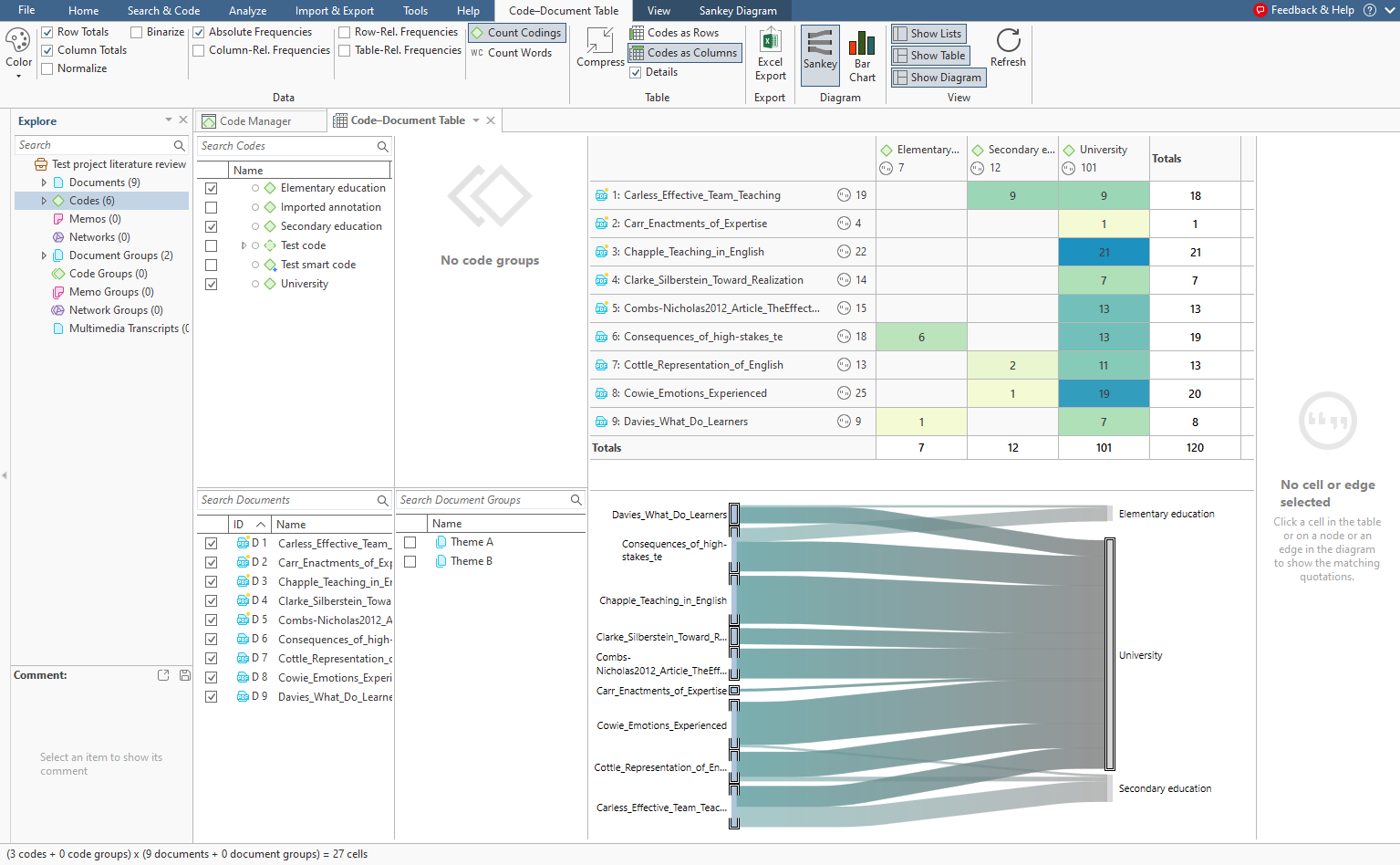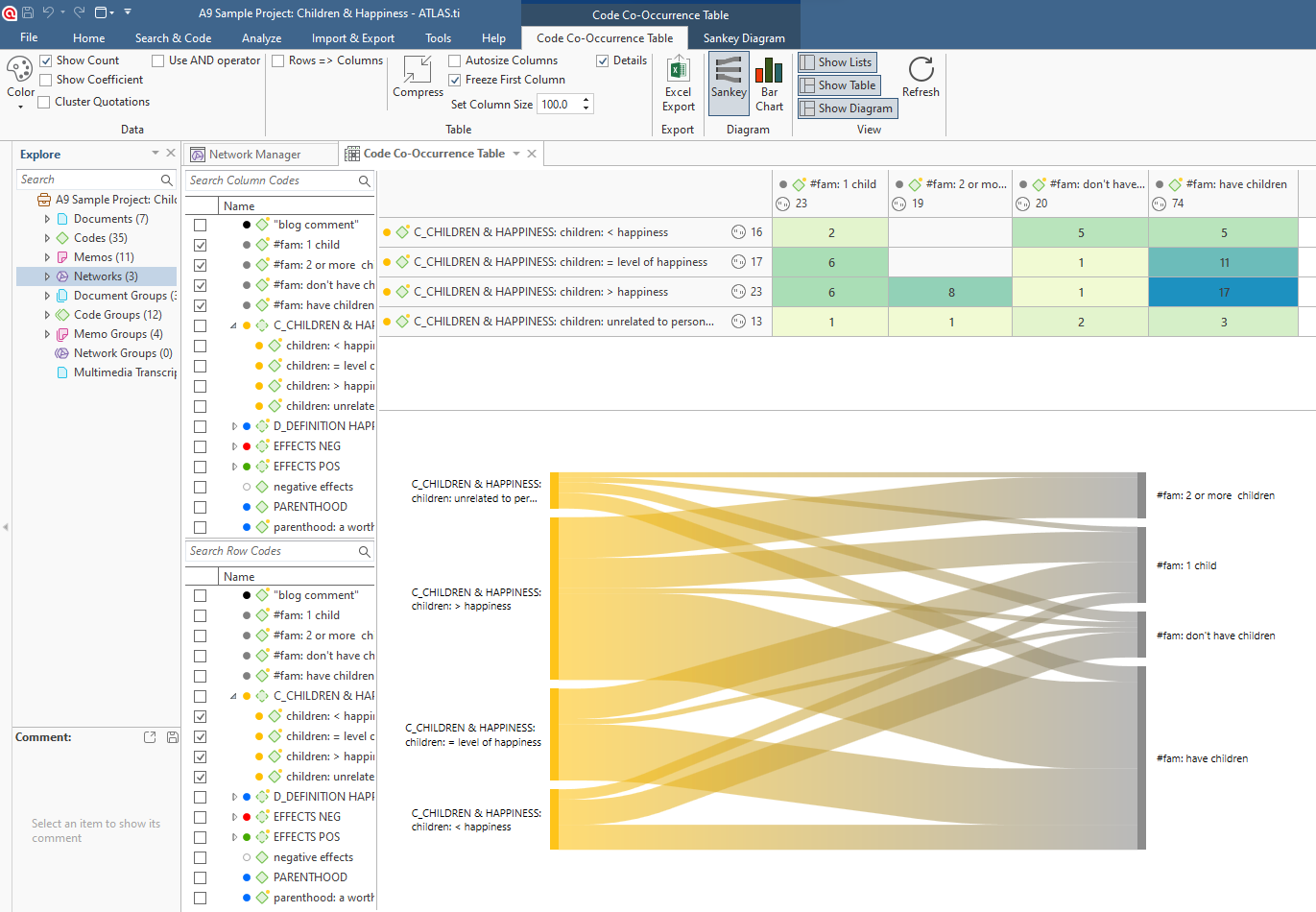The Ultimate Guide on Writing a Literature Review
- Literature review
- What is a literature review?
- What is the purpose of a literature review?
- What does a literature review look like?
- How can I conduct a literature review?
- How do I analyze a literature review?
- How do I use ATLAS.ti to conduct a literature review?
- What are some strategies for writing literature reviews?
Literature review - an Overview
The literature review might be the least romantic part of research. However, the importance of searching for relevant literature in helping establish the research question for your study cannot be overstated.

Let's examine literature reviews and how ATLAS.ti can help you.
- What is a literature review?
- What is the purpose of a literature review?
- What does a literature review look like?
- How can I conduct a literature review?
- How do I analyze a literature review?
- How do I use ATLAS.ti to analyze a literature review?
- What are some strategies for writing literature reviews?
What is a literature review?
To emphasize the importance of a literature review, let's examine its place in scholarly inquiry.
Foundations of scholarly literature
In mainstream research, a researcher shares their research in a paper that appears in a journal article, book chapter, thesis, or dissertation.
Novel and interesting research is more likely to be published. A researcher needs to be able to write a literature review to persuade scholars that their work is original and important.
What is the purpose of a literature review?
A good literature review can help you critically evaluate a particular topic's current knowledge and key concepts. A researcher should provide an overview and demonstrate they understand the knowledge surrounding their inquiry to generate new knowledge.
Identifying a research gap
Literature reviews can identify which developments occurred and where a gap remains that can be filled by further inquiry. For example, current research may assert that sufficient sleep benefits athletes in sports like basketball and soccer, while other researchers have reached the same conclusion in tennis and golf. However, if a researcher believes rugby players might have different sleep needs, there is a gap in the literature if no one has conducted a study specific to rugby.
Various gaps can be uncovered in a literature review. Examples include:
- A lack of research in a particular geographical area
- A focus on various theories while overlooking others
- An absence of studies after a certain time period
Summarizing themes and patterns
Literature reviews can help develop theory based on existing knowledge. This is an approach to knowledge called synthesis. It helps draw connections across various studies and bring insights that individual papers may not be able to provide.
Writing for your audience
To publish in a peer-reviewed publication, you should also consider how reviewers and readers will see your work to ensure your research is read widely.
Reviewers for an academic journal want to know if the author of a paper understands the theories and work in his or her field. Thus, a researcher must summarize the key themes relevant to the theories or knowledge under discussion. A reviewer may not find the author credible without a comprehensive understanding of certain developments central to the research area.
Students may also be asked to report on the literature to demonstrate knowledge of the field and critical analysis skills. Well structured paragraphs and sections convey that your approach makes sense. These skills are fundamental in a thesis or dissertation. Students are often expected to write an entire dissertation chapter providing a summary of the existing research and different aspects that can inform more research.
ATLAS.ti helps you make sense of research.
Download a free trial of our qualitative data analysis software to see how it can work for you.
What does a literature review look like?
The shape of your analysis will depend on your research objectives. A written literature review can either be part of a larger research paper or stand alone.
A literature review section
A typical, original research paper begins with reviewing literature to justify the novelty and importance of the inquiry being undertaken. For example, imagine that the author wants to examine the study habits of university students heavily engaged in social media. How does the author know other researchers haven't already explored the topic? And if they did, how can the author contribute new and interesting insights to move understanding further?
A background section in a larger paper should summarize the relevant, existing research to answer these questions. By examining studies on study habits and social media use, the author can demonstrate they have thoroughly surveyed the field to determine if enough studies have explored both topics simultaneously.
A stand-alone literature review
A review can also be a full-length paper. As stand-alone papers, they present a secondary analysis of a series of discrete but related studies in which the researcher provides their own interpretations on the overarching topic.
Remember that writing this type of paper is similar to writing a full paper on your own research project, and peer reviewers will evaluate it as such. A full research paper typically requires a description of the research methodology and the author's specific theoretical approach to analyzing the studies. A clear account of how the author conducted the analysis makes the key findings more credible.
How can I conduct a literature review?
You need not read all of the available theoretical scholarship to identify recurring central themes or important trends. A review merely samples the most relevant studies to generate key findings after summarizing sources.

Put simply, the researcher needs to collect written studies. There is no minimum number of required studies that constitute a good literature search, as it varies depending on the topic, the research question, and the amount of discussion that already exists on your subject.
In general, relevant sources include academic journals and monographs. Journals are easily searchable via library databases and online search engines like Google Scholar, which may even lead you to downloadable PDFs of full articles. Scholars may also make their research papers available on websites like Academia.edu and ResearchGate.

Look for scholarly sources who are well-known in their field. They can provide fundamental theories critical to your review and link to previous, useful literature.
It's also important to emphasize recent studies in your collection. Especially in the social sciences, developments within the last five years are often more helpful than older research. Later studies may have already challenged or refuted older papers, diminishing their potential contribution to your inquiry.
Other sources of research can include conference proceedings, university bulletins, unpublished theses, and any other publication available for other scholars to read. You may also incorporate records from cultural sources, theoretical discussions in presentations, or newspaper articles.
Keep in mind, however, that scholars take peer-reviewed publications like journal articles more seriously. On the other hand, if you are studying an underdeveloped topic with few published studies, you can consider other information sources to demonstrate a discussion gap.
Organize your data all in one place.
Text files, PDFs, videos, and pictures. ATLAS.ti analyzes them all. See how with a free trial.
How do I analyze a literature review?
A good analysis should have a deliberate methodological approach. In other words, a review is more than just a report of relevant research from scholarly articles. A researcher writing a literature review needs to synthesize the existing knowledge and key debates from the collected studies.
Thematic review
Simply put, a literature review aims to identify key concepts that frequently appear in the collected studies. If your inquiry revolves around study tools, for example, what tools appear to be studied more often than others? Perhaps technology like computers and tablets appear often in studies, while newer devices such as virtual reality headsets and other wearable technology are given less focus.
Understanding what topics have already been studied in abundance can help you make an argument about what researchers should explore next. Prominent themes provide a helpful guide for identifying important trends and turning points in research.
Quantitative analysis
As mentioned earlier, identifying gaps is a common rationale for writing a literature review. Examples of knowledge gaps include underexplored aspects of theory, lack of discussion in particular contexts, and underutilized research methods.
A quantitative analysis of the literature can help illustrate these gaps. For example, you can argue for a methodological gap among your collected studies. In a set of 40 papers, if 25 involve studies based on interviews and another ten are based on surveys, you can argue that further observational research is necessary.
How do I use ATLAS.ti to conduct a literature review?
One of the key functions of ATLAS.ti as a literature review tool is to reorganize data in a way that allows for comfortable and efficient data analysis. By now, you have collected enough PDFs to conduct your literature review. You can use ATLAS.ti to store PDFs in one place, and easily add codes directly onto these PDFs for analysis.

Many tools in ATLAS.ti can help you with the analysis, which eventually leads to writing the report about the collected studies.
Named Entity Recognition
If your inquiry is based on location (e.g., testing the applicability of a theory in European and Asian contexts), Named Entity Recognition can provide automated coding of your documents. It uses artificial intelligence to identify the names of places, people, or organizations, which can help generate codes.

Query Tool
One good way to analyze the literature is to code for the themes present in studies. For example, if your inquiry concerns public transportation, you can code for themes like subways, buses, and walking. You can use the Query Tool to find data segments containing these thematic codes with the location codes you generated in the Named Entity Recognition tool. Using the Query Tool in this fashion can help you find scholarly discussion about public transportation depending on location, such as major cities or geographical regions.
Code-Document Table
This tool can help you identify which documents contain codes you have added to your project. This helps group studies into different categories based on aspects such as contexts, methods, or findings. You can also easily assess absolute and relative frequencies of codes across your literature.

What are some strategies for writing literature reviews?
Writing a literature review involves discussing your collected studies by describing prominent themes, scholarly aspects that are missing or underexplored, or a combination of both. Remember that a key goal is to demonstrate your knowledge of the most recent and important developments in the field.
Examine the thematic codes in your project to determine which themes are most apparent and which elements remain underexamined. You can use these code frequencies in your written report to explain the extent or absence of theoretical development in the field (e.g., "Bus transportation is mentioned in only 7% (14 times) of the collected literature, demonstrating a lack of research on what people think about using buses for commuting.").
The goal of the writing process is not to exhaustively detail every study but to describe the most apparent trends or missing information. Select 3-5 themes that arise from the codes and describe each in detail, citing studies from the collected literature as key examples.

The full reference for each study can be conveniently saved in the comment space of each document. Literature reviews often have an annotated bibliography to provide an overview of the studies in your literature collection. You can use Microsoft Excel to extend the table generated in the Code-Document Table tool and create space for each summary. This table can accompany a larger discussion on the overarching themes of the research.
Other visualizations in ATLAS.ti can provide helpful illustrations for your literature review. The Sankey diagram in the Code Co-Occurrence or Code-Document Tables can help explain the relationship between various aspects of your analysis. Sankey diagrams can be exported for use in your manuscript.

Networks can also be used to show relationships between different codes. You can export your project's networks as image files to be pasted into your manuscript.

From research question to findings, make it happen with ATLAS.ti.
All the tools you need at every step of the research process. Try ATLAS.ti with a free trial.



